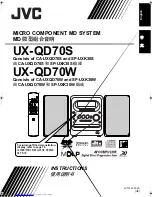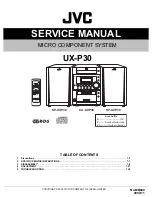
13
Account Code Entry
Account Codes are user-dialed codes that help the system administrator categorize
and/or restrict trunk calls. Optional Account Codes allow a user to enter an Account
Code while placing a trunk call or anytime while on a call. The system does not
require the user to enter the optional account code.
Account Codes for Incoming Calls
The system can control extension user ability to enter Account Codes for incoming
calls. When this option is enabled, a user can dial
*
while on an incoming call, enter
an Account Code, and then dial
*
to return to their caller. If the option is disabled, any
digit the user dials after answering an incoming call outdials on the connected trunk.
Hiding Account Codes
Account Codes can be optionally hidden from a telephone display. This prevents, for
example, an unauthorized co-worker from obtaining a Verified Account Code by
watching the display. When hidden, the Account Code digits show
*
on the telephone
display.
Account Code Capacity
Account Codes print along with the other call data on the SMDR record after the call
completes. Account Codes can have 1~16 digits using 0~9 and
#
.
Redialed Numbers Do Not Contain Account Codes
When using the Last Number Redial, Save or Repeat Dial features, the system does
not retain Account Code information. To redial any number with these features, the
user must enter an Account Code.
:
If a user enters
*
12345
*
203 926 5400
*
67890
*
, if the Last Number Redial feature is used, the
system dials the number as 203 926 5400
*
67890
*
. The
*
67890
*
is not treated as an Account Code.
A
Summary of Contents for Univerge SV9100
Page 1: ... SV9100 Features and Specifications Manual Rev 1 2 March 2016 ...
Page 64: ...64 Required Component s None ...
Page 238: ...238 Walking Code Restriction 663 ...
Page 239: ...239 Temporary Code Restriction Override service code be changed 775 ...
Page 285: ...285 Single Line Telephone 1 Lift the handset A fast busy is heard 2 Dial 759 3 Hang up ...
Page 332: ...332 Circular Routing Department Calling Circular Routing CALL 1 CALL 2 CALL 3 CALL 4 ...
Page 406: ...406 Trunk Distinctive Ringing Flow Chart ...
Page 407: ...407 ICM Distinctive Ringing Flow Chart ...
Page 442: ...442 CCIS Standard Calls ...
Page 447: ...447 CCIS VE Standard Calls ...
Page 456: ...456 CPN sent when making a 911 call across CCIS trunks from a terminal ...
Page 461: ...461 CCIS VE 911 Calls ...
Page 637: ...637 Cascade Message Notification Flow Chart 1 ...
Page 638: ...638 Cascade Message Notification Flow Chart 2 ...
Page 639: ...639 Cascade Message Notification Flow Chart 3 ...
Page 655: ...655 Cascade Message Flow Chart 1 ...
Page 808: ...808 DTI U40 ETU Programming Flowchart for ISDN PRI Answering Calls the GCD PRTA Overlap ...
Page 813: ...813 ...
Page 844: ...844 None Related Features None Guide to Feature Programming None Operation None ...
Page 915: ...915 Communications Interface feature for more ...
Page 916: ...916 ...
Page 917: ...917 Operation None ...
Page 948: ...948 Operation Normal call handling procedures for single line telephones apply ...
Page 1015: ...1015 Related Features None Guide to Feature Programming None Operation None ...
Page 1026: ...1026 Operation Refer to Central Office Calls Answering ...
Page 1030: ...1030 Multiline Room Monitoring ...
Page 1031: ...1031 Single Line Telephone Room Monitoring ...
Page 1146: ...1146 SMDR Flowchart Continued ...
Page 1147: ...1147 SMDR Flowchart Continued ...
Page 1371: ...1371 ...
Page 1400: ...1400 To answer off hook signaling 2nd call and 2nd caller disconnect the call NOTE ...
Page 1402: ...1402 SV9100 Features and Specifications Manual NEC Enterprise Solutions ...














































